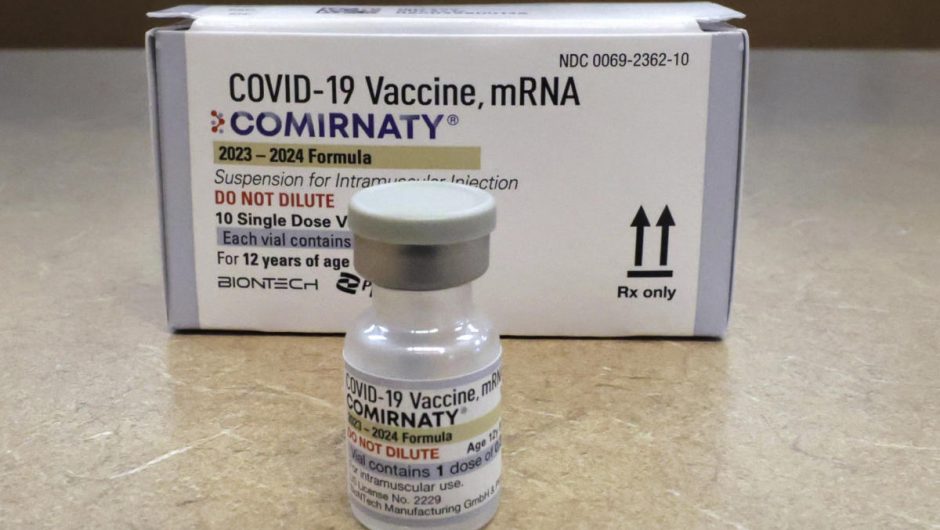[ad_1]
The World Health Organization has scheduled a special meeting Friday to discuss a worrying new coronavirus variant detected in South Africa that appears to be rapidly mutating.
The so-called B.1.1.529 variant appears to have a high number of mutations — about 30 — in its spike protein, which could affect how easily it spreads to people, scientists have warned.
“We don’t know very much about this yet. What we do know is that this variant has a large number of mutations. And the concern is that when you have so many mutations, it can have an impact on how the virus behaves,” said Dr. Maria Van Kerkhove, WHO’s technical lead on COVID-19, according to CNBC.
Here is what we know about B.1.1.529 so far.
Where has B.1.1.529 been detected?
It’s unclear from where the new variant actually arose, but it was first detected by scientists in South Africa and has also been seen in travelers to Hong Kong and Botswana.
On Friday, Israel — one of the world’s most vaccinated countries — announced that it has also detected the country’s first case of B.1.1.529 in a traveler who returned from Malawi.
The World Health Organization has scheduled a meeting to discuss a new coronavirus variant detected in South Africa that appears to be mutating.AP
“We are currently on the verge of a state of emergency. Our main principle is to act fast, strong and now,” Israeli Prime Minister Naftali Bennett said in a statement released by his office.
The traveler and two other suspected cases have been placed in isolation. Israeli officials said all three are vaccinated but that it is currently looking into their exact vaccination status.
Is B.1.1.529 more infectious?
A lot about the strain is still unknown, however, its scientists say its high number of mutations could mean it is more transmissible.
Sharon Peacock, who has led genetic sequencing of COVID-19 in Britain at the University of Cambridge, told the Associated Press that the data so far suggests that the virus’ mutations are “consistent with enhanced transmissibility,” but said that “the significance of many of the mutations is still not known.”
She said it would take several weeks to do the necessary lab tests to determine answers.
B.1.1.529 has a spike protein that is extremely different to the one in the original bug that the vaccines are based on.AP
Francois Balloux, director of the Genetics Institute at University College London, said a spike in COVID-19 infections in South Africa — particularly in Gauteng, the country’s most populous province — was concerning.
“The biggest risk is that (this variant) is better at re-infecting people as well as being more transmissible and virulent,” he said in a statement.
Can B.1.1.529 evade vaccines?
B.1.1.529 has a spike protein that is drastically different to the one in the original bug that the vaccines are based on, according to the UK Health Security Agency, which is raising some concern about how current jabs will perform against it.
South Africa’s Department of Health also said during a briefing Thursday that the variant contains several mutations associated with increased antibody resistance, which may reduce the effectiveness of current vaccines.
Penny Moore, a virologist at the University of Witwatersrand in Johannesburg, said scientists are studying the role of vaccines in halting the spread of B.1.1.529.
“We’re flying at warp speed,” Moore told Nature magazine.
However, it is important to note that fewer than 100 full genome sequences of the variant are so far available, according to the WHO.
It’s unclear from where the new variant actually arose, but it was first detected by scientists in South Africa and has also been seen in travelers to Hong Kong and Botswana.AP
“It will take a few weeks for us to understand what impact this variant has on any potential vaccines,” Van Kerkhove said.
WHO experts are meeting Friday to discuss the risks the variant presents and if it should be designated as one of interest or variant of concern.
“Right now, researchers are getting together to understand where these mutations are in the spike protein and the furin cleavage site, and what that potentially may mean for our diagnostics or therapeutics and our vaccines,” Van Kerkhove said, adding that the agency could assign it the Greek name Nu.
[ad_2]
Source link




